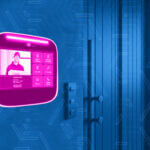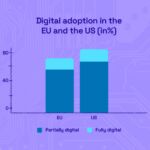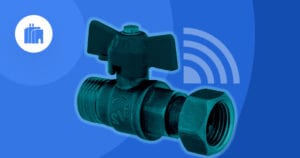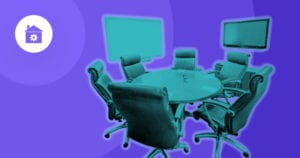
Although a Building Management System (BMS) may seem like a new concept, it has been around for 50+ years. Traditionally, a BMS is a computer-based control system that is installed in a building and used to monitor and regulate its mechanical and electrical systems. These systems may include lighting, ventilation, power, elevator, and security.
Throughout the years, the BMS has developed and evolved with the rise of BMS technology, especially within the Commercial Real Estate (CRE) market. This has resulted in the three different classifications of BMS systems that this article will address: single integration BMS, partial integration BMS (via IoT enabled devices), and fully enabled BMS utilizing Digital Twin.

Single Integration BMS
Single integration BMS has been utilized within the CRE industry for decades to increase operational efficiency and reduce energy costs. However, small and medium-size CRE buildings have experienced minimal cost benefits due to the limited interconnectivity the single integration BMS provides. This traditional BMS contains disparate subsystems installed within a building office. Each has their own individual IT infrastructure, and only building management/facility management staff are granted access to these systems. All the disparate subsystems in a building, such as HVAC and lighting remain disconnected and are managed separately by manual intervention.
So what does this look like? Older buildings with single BMSs will often have facility staff regularly checking each system within the building. This person keeps track of all their recorded data on each system. They need to manually interpret this data correctly in order to act accordingly to best operate the building systems.
For example, to inspect and maintain a building’s HVAC systems, a facility manager would have to go around to each floor of the building, manually record the humidity reading, and repeat these steps daily, weekly, and seasonally. Also, keep in mind that facilities personnel can only check up on subsystems while present, within the building. This process is both time-consuming and costly, as problem fixes and system adjustments cannot be addressed and modified in real-time.
BMS System Adoption
As subsystems grew and became more complex, the need for improved energy efficiency and more integrated building management solutions also grew. Luckily, the Internet of Things (IoT) for buildings developed around 2010 and quickly became a game-changer. As a result, there was the adoption of integrated BMS systems, combining a few individual subsystems that could now communicate with one another. For businesses, this meant the rise of remote monitoring, condition-based maintenance, and automated labor scheduling. Through data collection, analysis, and automated control, these interconnected IoT technologies became very valuable to facility management staff.
Facility managers could now electronically receive notifications on their mobile devices. This allows them to make adjustments to building subsystems without the need for physical presence or even on-site presence much quicker. As an example, if the occupancy level drops to zero within an office, the facility staff will receive a notification to turn off all the lights in that room. This change can then be made remotely, saving a great deal of time and energy. As illustrated, the goal for IoT integrated BMS’s remains the same as those from earlier-stages: to optimize building performance, and in turn, save money.
Digital Twins
Fast forward to today, Digital Twins are transforming the BMS and CRE industries. Digital Twins connect previously disparate BMSs to remotely monitor processes and optimize work-flows. But, they also bring something new to the table. Digital Twins provide new insights in real-time, offering new ways for organizations to maximize increased efficiencies and reduce costs.
Digital Twins enable an advanced approach to building management, through real-time decision making, as well as a deeper focus on tenant experience. Fully enabled Digital Twins address the limitations of a BMS by unlocking meaningful insights for CRE owners, occupants, and operators.
A BMS can modulate the lighting to accommodate for low occupancy. But, only a fully enabled Digital Twin can provide deeper context to elucidate the decline in occupancy. A Digital Twin can highlight that the room has substandard airflow, causing occupant discomfort, and therefore few occupants. These technologies not only deliver the current state of building subsystems but, through the collection of data, they also provide a map of system trends to influence future management decisions. The technology provides real-time data on how assets such as lighting and HVAC are influenced by interactions between people, processes, and connected things.
Digital Twin & CRE
Digital Twin technology in operations and maintenance is more relevant now than ever, following COVID-19 and the reopening of more buildings. CRE companies must ensure they are taking all measures to minimize the risk of the virus within their buildings while still performing daily tasks. Fortunately, Digital Twins will enable CRE buildings to be better equipped to maintain safe spaces. Let’s take a look at some examples of vital Applications for maintaining clean, healthy, and virus-free work environments.
- Contactless entry and exit of buildings are made possible through Digital Twin’s integration of building access systems. This integration enables all tenants to avoid contact with door handles by using their phones as access cards for safe entry and exit.
- In addition, through the use of a Digital Twin empowered tenant experience app, building management teams can communicate and update accurate social distancing policies. The app informs tenants through their mobile devices immediately when there is a new policy update.
- Digital Twin also ensures best cleaning practices for building offices, by enabling automated cleaning schedules. This means that common areas and most used rooms will be more effectively set-up for regular cleaning.
Building Management & Smart Buildings
Consider, with the use of Digital Twin connected sensors, workplaces will be well prepared for preventing the spread of the virus. For example, occupancy sensors can be utilized to enforce social distancing policies, a notification will be generated for the building management team when a space exceeds capacity. This will provide the building management team with immediate, actionable insight based on the data collected through occupancy sensors. Also, these sensors can monitor humidity, airflow and air quality levels and can be regulated through Digital Twin to regulate and adjust to optimum standards.
The Digital Twin enables what is now considered Smart Buildings. Smart BMSs are constantly evolving to best fit the needs of today’s owners, operators, and occupants within the CRE industry. Today, as we start to imagine a post-COVID-19 world and begin the shift back to working in-office, it is evident that now is the best time for businesses to consider implementing Digital Twin technology. This technology allows organizations and building managers to remain resilient and in control of their environments at a time when everything feels uncertain.
It is without a doubt that this contextual model of an entire organization and its operation will make the future of building operations and tenant experiences seamless and safer.





 Related Podcast Episode
Related Podcast Episode




 Related Applications
Related Applications


 Latest IoT News
Latest IoT News










